Independent Activism in Cuba
June Fernandez*
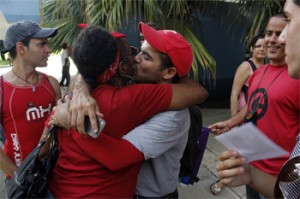 HAVANA TIMES — “Come wearing something red and kiss someone, because all forms of love are important.” Last June 28, forty-six people who had received this message via instant messaging or e-mail met in the Havana bus terminal, near the Plaza of the Revolution, to kiss each other.
HAVANA TIMES — “Come wearing something red and kiss someone, because all forms of love are important.” Last June 28, forty-six people who had received this message via instant messaging or e-mail met in the Havana bus terminal, near the Plaza of the Revolution, to kiss each other.
The group that had promoted the gathering was the Rainbow Project (Proyecto Arcoiris) an independent collective aimed at mobilizing the citizenry to take their demands for the rights to sexual diversity and the free expression of affection to the streets.
The government of Raul Castro has officially broken with the regime’s homophobic past and is sponsoring policies of non-discrimination; however, displays of affection between people of the same sex are still penalized by laws that categorize them as “indecent exhibitionism.”
“We held the Kiss-In precisely for those people who have not yet decided to come out of the closet of what has been authorized and coordinated, of that supported by the superior authorities that know everything and define everything. They learned that the street does not belong to the authorities, to the chimera called “the revolutionaries” that no one knows in the end how they look or what they believe in,” Yasmin Silvia Portales Machado, founder of the Rainbow Project, explained in her blog.
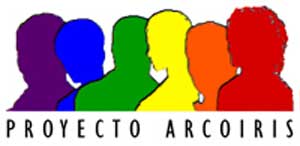 Although four or five dozen people might seem like a small thing, organizing an action in demand of change outside of the government and of the anti-Castro opposition is something unheard of in a country where political polarization colors every social initiative.
Although four or five dozen people might seem like a small thing, organizing an action in demand of change outside of the government and of the anti-Castro opposition is something unheard of in a country where political polarization colors every social initiative.
The National Center for Sexual Education (Cenesex), which coordinates the policies for sexual diversity under the leadership of Mariela Castro, Raul Castro’s daughter, doesn’t recognize June 28, a day in which gay pride events are organized in many cities around the world. The latter are considered an imperialist and capitalist celebration.
Instead, they have established May as anti-homophobia month and organize activities to sensitize the population to questions such as civil unions between people of the same sex or the special health needs of transsexuals.
As a result, on previous June 28’s only the LGBT Rights Observatory, a collective identified with the dissident movement, has gone out on the street. Definitely, the choice has been official activities in May or anti-Castro Pride in June.
The Rainbow Project has broken with this logic and with no further ado has joined the commemoration of the anniversary of the Stonewall disturbances, in tune with the international LGBT community.
The organizers were very nervous: “Since Tuesday I had a nervous tic in my right eye,” recalled Yasmín – but this time there were no incidents. They did, however, receive messages from people who feared for their safety or from those who had heard that the initiative came from an opposition group, as another of the promoters, Luis Rondón Paz, states in his blog.
Despite such rumors, the police didn’t appear, nor did the participants receive any pressure. “I suppose that such permissiveness was associated with the fact that the act of kissing each other could be seen as something legitimate, innocent, beautiful,” Isbel Díaz Torres, another founder of the collective wrote. He does however underline the political character of the action in a post where he recalls how he was fined years ago for kissing his boyfriend on the beach.
Following the reading of a communiqué entitled: “The revolution is the struggle against all kinds of discrimination”, the participants nervously awaited the signal and kissed each other. Passion was lacking and the kissing was mainly among women, “but the photo of Isbel with his boyfriend has been seen around the world, so that we did meet our objective of achieving visibility for the LGBT movement in Cuba,” Luis exults.
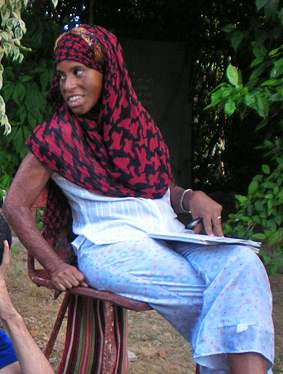
The Critical Left
The Rainbow Project is one of the small autonomous collectives that have emerged in the last decade under the umbrella of Observatorio Crítico (Critical Observatory) the most notable experience of social activism outside the perimeter of the Cuban institutions.
This network brings together people who defend anti-capitalism, socialism, anarchism in a few cases, and Cuban sovereignty from a position of unstinting criticism of all forms of discrimination, authoritarianism and repression promoted by or permitted by the Government.
They do this through initiatives such as the Rainbow Project, the Negritude Brotherhood (which criticizes the institutional and social racism which persists in Cuban society and seeks to reconstruct the historical memory of the black community) and the Guardabosques (Forest Rangers), an environmental project headed by Isbel.
Critical Observatory distributes compendiums of articles over e-mail, organizes debates on such diverse topics as genetically modified foods, trans-feminism or the rap-inspired “reggaetón” music and popular culture.
It also holds annual social forums that have become a point of reference for the critical left in Cuba. They agree with the socialist project, but not with the marked Stalinism of the regime. They defend basic liberties, but they set themselves apart from the official dissident movement with its support for implanting a capitalist system under the tutelage of the United States.
Faced with those who dedicate themselves to the unconditional defense of what they call the Revolution, and those on the other side who concentrate their energy on defeating what they define as a clear dictatorship, the Cubans associated with Critical Observatory concentrate on denouncing concrete expressions of inequality and on debating a model that could reconcile revolutionary principles with respect for basic freedoms.
They assert that the Revolution must be feminist, anti-rascist, and anti-homophobic, or it won’t be anything. Their proclamation recalls the M-15 (Spain) movement, to which these activists feel related.
Their anti-capitalist ideology leads them to oppose all US interference, but also to question Raul Castro’s economic model which promotes private initiative, foreign investment and also mass lay-offs, and to advocate for collective formulas such as cooperatives.
Their stand on the Pope’s visit to Cuba last March was also significant. While the Castro supporters were rubbing their hands together in glee over the legitimacy that the visit provided them, and the anti-Castro factions lamented the scarce attention that his Holiness awarded them, Yasmín and other members of the Observatory were a discordant note.
They criticized the fact that a lay State like Cuba would waste public money to welcome the leader of an institution that doesn’t recognize sexual and reproductive rights; they wrote ironically about the Communist Party’s eagerness to host a leader who was belligerently opposed to Marxism, and condemned the fact that the Afro-Cuban religions, whose influence is greater than that of Catholicism, have not received any such governmental recognition.
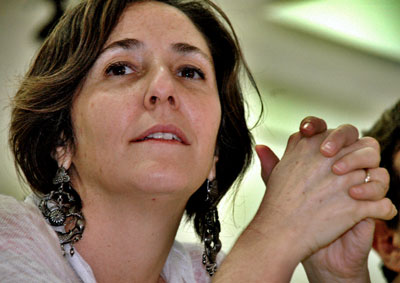
Months before, they fantasized about showing public indignation over the Pope’s visit, but in the end they limited themselves to expressing their point of view in the alternative media and in the blogs.
The right of association in Cuba
To grasp the situation in which this autonomous left finds itself, it’s helpful to understand how the right to associate functions in Cuba. This State that defines itself as revolutionary has historically put up barriers to the existence of independent social movements.
Raul Castro’s declarations of a new openness and the fact that at least in words he has defended freedom of expression and of the press, is one of the factors that explains the recent emergence and survival of autonomous social and cultural initiatives.
However, the pro-Castro groups continue to defend the idea that only the official mass organizations like the Cuban Women’s Federation or the groups linked to Cenesex can legitimately mobilize the citizenry in favor of social demands.
Rogelio M. Díaz, blogger and member of Critical Observatory, attributes this to the official line that the concept of “civil society” is “bourgeois, subversive and a United States’ strategy to penetrate the Third World,” while “the mass organizations incorporate into their statutes the notion of following the Party leadership.”
He cites three factors: the climate of aggression on the part of the US, the leadership style of Fidel and the politics of the socialist camp.
Given that many supposedly independent associations “are nothing more than tiny groups promoted by the CIA and other forces of the USA”, the blogger emphasizes that it is absolutely necessary that the United States renounce their intention to promote a regime change if the situation is to normalize: “If this by some miracle were to occur tomorrow, then we would be able to measure the real willingness of the Cuban government to abandon their strict controls.”
Among other things he makes reference to the combination of bureaucratic snags and lack of political will that makes it practically impossible to constitute associations. Article 54 of the Constitution recognizes the rights of assembly, demonstration and association [although Article 62 warns that it is a punishable offense to exercise these freedoms to jeopardize “the existence and aims of the socialist State”].
However, in fact an aspiring association must be sponsored by a State entity in order for the Ministry of Justice to authorize its inscription into the corresponding registry. The sponsoring State organization “then then becomes its related organ, that which controls it and attends to its needs,” Dmitri Prieto, founder of Critical Observatory, explains.
The registry takes years to arrive (if it arrives at all) so that the collectives opt for formulas such as creating academic professorships or projects inscribed within the cultural centers. “As long as there is no confrontation with the actual system, the authorities do not create any impediments, but they can meet with a lack of understanding, lack of resources and very little visibility,” he noted.
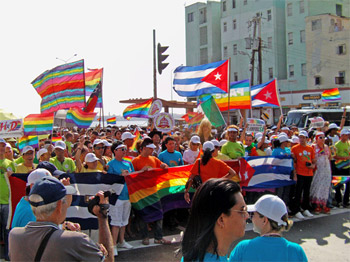
“Any individual initiatives for association are systematically demonized, even more so if they are of a political nature. It’s very difficult to question deeply the political and social structures, and it would also be suicidal,” Yasmín laments.
The Critical Observatory arose from the Haydée Santamaria Professorship, created from within the Asociación Hermanos Saiz, also known as AHS, the institution of young artists and writers, to investigate transformations in Cuban society.
In 2010, when their proposals began to be uncomfortable, the AHS informed them that their members had surpassed the age limit and could no longer remain tied to the institution. “Therefore, there was no more need to be politically correct as far as criticizing the institutions,” Yasmín notes. This reality sparked the Observatory’s transformation into one of the most anti-establishment collectives on the Island.
Nonetheless, becoming a network without institutional backing has its consequences. The scarce resources of the Critical Observatory, which barely stretch enough to buy a snack for meetings, come from the solidarity of European anarchist and anti-capitalist collectives.
There is no headquarters: they hold their debates in a paladar (private restaurant) managed by some sympathizer, or in a park. They chose the second option for a colloquium with an activist from Madrid’s 15-M movement, which included the presence of both an agent from State Security and an “independent” reporter from the official dissident movement.
The Cuban critical left defines itself as revolutionary and its activists work closely with Cuban institutions or with projects supported by them. They resist calling themselves “opposition,” since they identify more with a Cuban socialist movement than with the proposals of the dissidents.
This puts them in an uncertain situation: they don’t suffer direct repression and it could be said that their activity is tolerated, but as they consolidate they do feel an ever greater labeling.
The latest flurry was an article written by Percy Francisco Alvarado Godoy a former State Security agent, accusing a group of recognized Cuban intellectuals of working against the Revolution in projects directed by the United States as part of the conflict known as the cyber war against Castroism.
Alvarado Godoy has since apologized for what he calls an unfortunate error, but those affected have not accepted his apology: “Similar errors left authors like José Lezama Lima, Virgilio Piñera and other sunk into ostracism for years; they brought unnecessary pain to many and caused irreparable damage to Cuban culture and society,” alerts the writer Daniel Díaz Mantilla, one of those defamed.
Relations with the State institutions
Rogelio describes the government’s strategy as one of “gathering and channeling intelligently the tensions in several potential conflicts. The emblematic case is that of the LGBT movement. Cenesex, affiliated with the Health Ministry, promotes networks of gays, lesbians and transsexuals who go out on the streets to proclaim their demands, but do so under the institution’s tutelage.
Odaymara Cuest and Olivia Prendes, the rappers from Krudas Cubensi, now living in Texas, recall how the lesbian collective Oremi that they participated in was swallowed up by Cenesex. “One fine day, Mariela [Castro] arrived with an authoritarian air, to announce that the group needed to function in a top-down manner.

“She imposed the presence and leadership of some psychologists who weren’t lesbians, who brought us cases with pathologies that they were attending in their clinics. We couldn’t discuss our problems as healthy lesbians. For that reason we preferred our autonomy,” Prendes explains.
It hadn’t been her first clash with Mariela Castro. During the nineties they had tried to form a “queer” collective with friends for the United States and had planned to attend the May 1st demonstration carrying a rainbow flag.
“The objective of the march is to unite us against imperialism and for socialism, so we said, “Why not carry our own little flag, since we too are part of this country? Ay yi yi, – they gave us a sound slapping. They stole our flag, then they began going to the home of each activist. We asked Mariela Castro if she could give us a paper or something giving permission to form a small LGBT group.
“She said, ‘No, Cuba isn’t ready for it.’ ‘No, this is a macho culture. Maybe in ten years.’ “
And more than ten years later, Cenesex continues trying to monopolize LGBT activism through their organizations, even though some of their members favor the existence of autonomous collectives.
“I believe that the formation of a potentially autonomous movement for sexual rights is necessary, but one that includes heterosexuals who dissent from the hegemonies and that maintains a horizontal and participative form of functioning, well distanced from feuds, grudges and personal vanities. Such existence doesn’t imply a negation of the Cuban socialist principles, but their strengthening and the construction of a more just and decent society,” states Alberto Roque, himself an activist in the Communist Party and the dynamic force behind “Men for Diversity”.
Participants feel that this group, under the wing of Cenesex, offers a margin of space to channel criticism of Government policies and to express themselves freely. Some, like Luis Rondón Paz and Paquito el de Cuba also maintain their own blogs in which they lash out against practices like homophobia in the workplace, in sports or in the media.
“I’ve been risking my neck for awhile. An old lover tells me: “You’re crazy as a loon” and I responded. “Listen, change doesn’t fall from the ceiling. When something is wrong, you have to shout out loud using every means necessary so that the message reaches its destination as little adulterated as possible.”
That’s how Luis explained his stance on maintaining activism both within and outside of the institutions, in a post venting his frustration at those who criticize him for participating in autonomous projects such as the Rainbow Project.
Luis, together with Yasmín, was one of the promoters of the NotiG (GNews) bulletin, which disseminated e-mail articles on gender identity as well as lighter pieces. They were informed that the bulletin couldn’t circulate without being registered in the National Registry of Serial Publications. They accepted the requirement to request the endorsement of Cenesex, but they are still awaiting a response.
In any case, the Rainbow Project currently represents the most ambitious initiative. It hopes to offer legal aid in cases of discrimination due to sexual orientation or gender identity, as well as promoting debate and a popular commitment against the bias towards a heterosexual norm, through actions such as the Kiss-In. They are also distributing a survey among those who are not heterosexuals to collect their demands.
In the case of feminism as well, the official discourse continues to be that the existence of the Federation of
Cuban Women, make an autonomous feminism unnecessary. Nevertheless, this mass organization continues to reproduce traditional feminine views without really promoting a bold confrontation with problems such as macho violence or police persecution against women who work as prostitutes.
The most powerful autonomous initiative in favor of gender equality was probably MAGIN, the Association of Women in Communications, which in its time agglutinated more than one hundred women journalists, artists, scientists and even politicians.
It didn’t last very long: in 1996, three years after its foundation and without succeeding in becoming legalized they were informed that they couldn’t continue to function, under the argument of fear that the United States would utilize them.
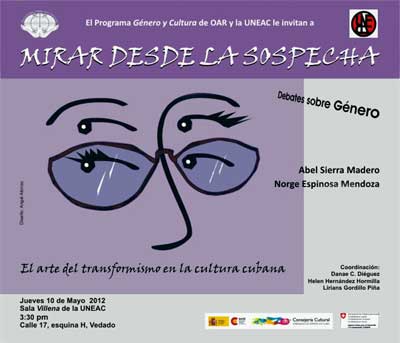 Over the last year and a half, the debate forum: “Look with Suspicion” has consolidated itself as a gathering space for Cuban feminists. They take on topics such as “Cyberfeminism, gender and nation”, or “Literature and feminism”, with presenters that include academics such as Isabel Moya or Norma Vasallo, but also autonomous activists such as Negra Cubana, Yasmín Portales or Krudas Cubensi.
Over the last year and a half, the debate forum: “Look with Suspicion” has consolidated itself as a gathering space for Cuban feminists. They take on topics such as “Cyberfeminism, gender and nation”, or “Literature and feminism”, with presenters that include academics such as Isabel Moya or Norma Vasallo, but also autonomous activists such as Negra Cubana, Yasmín Portales or Krudas Cubensi.
It’s chief promoters are three communicators: Hernández Hormilla, Lirians Gordillo Piña and Danae C. Diéguez. They have received the backing of the Monseñor Oscar Arnulfo Romero Group for Reflection and Solidarity (OAR) a legal non-governmental organization of Christian inspiration, and of the National Union of Cuban Writers and Artists (UNEAC) whose center they use to hold their debates.
“We could have met in our houses, but we were interested in penetrating into the space held by institutions and holding a dialogue with that structure which also has its strengths,” Danae explains. Nonetheless several of those attending fantasize about the idea of creating a network of autonomous and challenge-minded communicators as Magin had been.
Another project that has been launched autonomously, but with a certain degree of institutional backing, is Afro-Cubans (Afrocubanas) promoted by the blogger Sandra Álvarez and the writer Inés María Martiartu, with the objective of “making visible the contributions of Cuban black women to the national history and culture,” the former explains. It has produced a book, a blog and several meetings of black women in Sandra’s own house to debate questions of feminism and anti-racism.
The internet, key to autonomy
In Cuba, the majority of the population continues to have no access to the internet, and even those who do have it must put up with very precarious connections. In Havana, information mainly circulates via those handy USB memory sticks. The government sustains that the United States blockade has kept them from setting up broadband connections, and that this fact justifies their decision to prioritize certain sectors for satellite internet access: public institutions, universities, hotels, etc.
In 2007, Hugo Chavez announced that they would install a fiber optic cable from Venezuela to Cuba, but the process has made mysteriously slow progress, inspiring rumors of corruption. Up until today, the government has declared that the cable is “absolutely in operative condition,” but those on the internet have yet to note even the slightest improvement in the connection.
Even blogs considered “officialist”, such as Young Cuba (La Joven Cuba) have criticized the lack of transparency and the resistance to providing universal access to the internet. The majority of the cyber-activists use their workplaces to publish in their blogs and on social networks, consequently running the risk of being discovered and fired.
At any rate, the internet has been one of the elements that have permitted those from the critical left to make themselves visible, especially outside of the island. It has at least inspired hope in this new form of sharing information and having their denunciations heard.
In June, for example the police in Havana detained two members of Critical Observatory who had spray paint in their backpacks and held them for twelve hours. “By this time, Critical Observatory had already made public the denunciation on Facebook, Twitter and the WordPress collective’s blog. Fortunately, the new technologies manage to speed up a little the process of justice, although they aren’t able to transform the absurd.” Isbel wrote in Havana Times.
Havana Times is the digital daily of reference among the critical left: among its habitual contributors are several staunch members of Critical Observatory. Its director, Circles Robinson, defines it as an “independent source for presenting the complex Cuban reality, that struggles for information pluralism with diverse criteria in a country where this has been seen with suspicious eyes.”
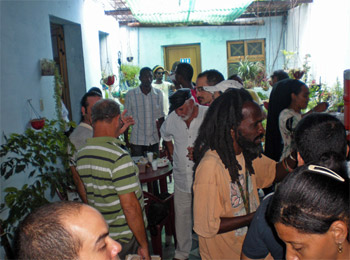
“Navigating in very polarized waters, we hope to contribute to elevating the debate and finding participative solutions to the country’s problems,” he adds. Havana Times publishes in Spanish and English, offering opinion pieces on such things as the multi-party system, relations with the Catholic church, or the economic reforms; news items that inform about questions that the official media silence (the crumbling of buildings or the mysterious fiber optic cable) and interviews to introduce new talents in Cuban culture.
Last month, Havana Times was accused in two articles published in Cubadebate and Rebelión respectively, of being a source “encouraged by the United States” and of supporting “counter-revolutionaries” such as the blogger Yoani Sánchez or Antonio Rodiles (Estado de Sats) for having interviewed them.
The fact that Circles was born in the United States makes it easier for those who accuse him of ties to the US Interests Section in Cuba. Although, he notes, he could have been born in any other part of the world, has lived in different countries and worked for 7 years for the Cuban government.
Another interesting space for those who want to escape from the so-called cyber-war between anti-Castro and official blogs is the “Bloggers Cuba” community. It arose with the vocation of “breaking the dichotomy between the experience of life on the island and its scant reflection in the national and foreign media.”
The majority of its members openly defend socialism, but maintain a critical perspective. The incorporation of feminist and anti-racist bloggers who favor sexual diversity like Yasmín or Sandra Álvarez, author of “Negra Cubana tenia que ser” (It had to be a Black Cuban Woman) has reinforced the critical and committed nature of this compilation of blogs.
Sandra, Yasmín, Isbel, Luis, Dmitri, Rogelio…the names repeat themselves when we talk about the critical left, feminist and LGBT activism, or about blogs and independent media, or about cultural projects linked to the institutions.
They are barely a handful of people but they continue to gain followers in their zeal to construct a socialist and sovereign Cuba, true to the revolutionary principles that guided the struggle against the Batista dictatorship, and free of repression and authoritarianism.
Amidst a broad explosion of individual initiatives since Raul Castro broadened the list of occupations that could be practiced autonomously, people joke about requesting that the Tax Administration to grant licenses for independent activism.
While the Government continues to place obstacles in the way of the consolidation of independent social movements, those connected with Critical Observatory ask that leftist collectives from other countries abandon their complacency towards the Castro regime and support them as the movement that can best extract Cuba from the fight between Stalinist communism and imperialist capitalism – two models in crisis.
——
(*) June Fernandez edits the online magazine Pikara.

My question to the writer is the following: how can some independent civil society groups be legalized, without legalizing all civil society groups, including those who advocate an end to the Cuban Communist Party’s monopoly on power?
The only thing I might add, Michael, is that a “Stalinist” model is a “Marxist” model.
Unless and until it is recognized on the Left that Stalinism, at least with regard to its core economic principle, is what Marx and Engels stipulated–i.e., the state owning all productive property–no progress can be made in “perfecting” the Cuban model.
Although you have given us a lot to digest here, June (like one of those elaborate meals Lezama Lima describes in Paradiso), you have presented a very satisfying banquet! From it, I gain intelletual sustinance– and optimism! I feel Cuba’s Revolution will develop in a democratic direction; it certainly can’t go back to a Stalinist model, and the capitalist model is daily becoming less appetizing.
This ‘network’ is awesome, you guys are truly making difference towards not only a better Cuba, but a better world!